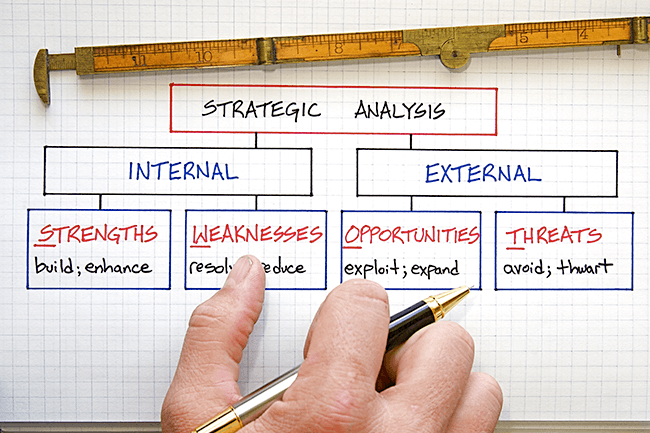What Is Storyboarding and Why Does It Matter In Business?

According to McKinsey, the most ambitious companies will focus on innovation in the next twelve months. Is your company ready to put innovation and creativity at the heart of your business model?
If so, you’ll need the right tools and processes to make that happen. One highly effective method other businesses have adopted in recent years is the storyboarding technique.
Here, we’ll tell you everything you need to know about storyboarding and how to use this method to drive success in your business. We’ll explain how to get started and also tell you what tools you need.
What is Storyboarding?
The original concept of storyboarding came from film sets, traditionally in animation. It’s how directors and writers would map out the scenes of a movie together so that the final result offers a coherent and engaging story.
In a business setting, you often find scenarios that aren’t too dissimilar to planning a movie. You might juggle resources, plan a marketing campaign, or design a new product.
But in all of these situations, you will find it helpful to sit down as a team and map all the different parts of your plan on paper from start to finish.
At this high level, where you’re discussing and jotting down ideas, the result of that planning might look much the same as a storyboard.
And that’s why companies have adopted storyboarding for business. It’s used to write down their ideas and plans.
But in a business setting, that storyboard will look slightly different from scenes and dramatic events. Instead, it will often present processes, tasks, or actions, one after the other, some happening in parallel and others sequential.
Most importantly, it’s visual, so it helps an entire team look at the same information in the same way.
In practical terms, the most traditional way for businesses to storyboard is by using a whiteboard or paper on a table.
But as we go through this article, you’ll see that technology has caught up with that idea, and there are now modern tools available to make the whole storyboarding experience faster and more valuable.
Benefits of Storyboarding
So why does a company need storyboarding for their business? Here are some of the notable benefits.
Customer Experience
Whatever product or service you sell to customers, one of the challenges you face is putting yourself in your customer’s shoes. What are their needs? What are they thinking and feeling when they buy from you?
That’s one place where storyboarding can help. You can use it to map out a customer’s experience from the moment they first discover you to any after-sales care they get after making a purchase.
That is common practice in web and app design, and it’s often called user experience design. It’s used to ensure customers have a smooth, seamless, intuitive experience online when interacting with your website (or app).
Team Alignment
Have you ever finished a meeting, returned to your desk, and realized a colleague had a completely different interpretation of what was discussed in that meeting than you? Which one of you is correct?
The answer is that neither of you is in the wrong, and this is relatively common in business meetings because communicating ideas and plans isn’t always easy.
That’s where storyboarding can help.
Storyboarding will enable each of you to visualize what you discuss. When people see an idea in front of them, it makes it much easier for everyone to walk away with the same understanding and minimize miscommunication.
Sharing New Product Ideas
Great ideas aren’t always easy to communicate to others, especially if they are complex or conceptual. So it’s pretty commonplace when someone has a vision for them to draw it on paper to explain their idea more visually.
Storyboarding provides a more structured and effective methodology when teams want to share ideas about new products, processes, or services for your business.
That’s because it allows you to step through each part of your idea bit by bit with your audience. And that’s often a good opportunity for your listeners to ask questions or spot gaps in your ideas that need further work.
Doing storyboarding in a company can help create a more innovative culture, which could be a fantastic competitive advantage for your business.
Planning a Project
Planning a complex project is often like juggling ten balls. There are many competing priorities, dependencies, and resource limits.
When a project manager needs to put together the project plan, it requires plenty of back and forth with the team to reorder tasks, negotiate on resources, and spot gaps.
Storyboarding can be a handy tool for the early stages of project planning. It’s a chance for a team to sit together and visualize the end-to-end activities throughout the project.
Doing this can help you create a more effective project plan and reduce the time it takes to get a team to sign off on a schedule.
It’s also a visual tool that many teams prefer to review, as a formal project plan is often hard to read and comprehend when it contains high levels of detail.
How to Make a Storyboard
If storyboards are suitable for your organization, you’ll need to understand the tools, techniques, and teams you need to implement before using them. Let’s look at these three things in more detail.
Tools
The most obvious tool for a storyboard is a whiteboard, but this also has some clear limitations.
You can only storyboard in person when your team is together in a meeting room with the proper facilities. So for this reason, many professionals prefer to use collaborative online tools instead.
At Huddle IQ, we have collaborative tools to support storyboarding for business teams.
It’s an online whiteboard, so it does everything you’d expect from a traditional physical whiteboard, but you can take it anywhere and share it with anyone – remotely and worldwide.
We have hundreds of templates that allow you to begin using our whiteboard tool without a laborious setup.
And we have features that will be familiar to most business teams when sharing ideas and plans, like virtual post-IT note design and drag-and-drop tools.
Techniques
If you haven’t done a storyboard before, here are some steps to help you create an effective one for your business.
Step One: Start With a Goal
Start with a clear goal. It’s tempting when storyboarding to start creating lots of ideas, but it’s easy to go off on a tangent. Consider your business storyboard the same way a movie director would begin a storyboard.
It must have a high-level idea or goal. Write this down and try and condense it into a single sentence. That will help ensure everyone on the team stays focused.
Step Two: Create Some Blank Spaces
You want to begin using the visual side of a storyboard, so create lots of blank spaces or steps to have some structure. It’s okay if this changes as you go. It’s there to provide a starting point.
If you’re using our Huddle tool, you can pick one of our hundreds of templates to get started.
Step Three: Start Adding Notes
The goal at this point is to get a high-level structure, so avoid any focus on the detail. Write notes for each step in your storyboard, even if it’s only one or two sentences.
It sometimes helps to sketch these ideas out as they’ll further aid the team in visualizing them.
Step Four: Run Through Your Storyboard
Once each story element has some information, it’s time to do your first “walkthrough.”
That involves starting at the beginning and going through each step to ensure it covers all your ideas and that everything is in the correct order. If not, now is the time to change and move things around.
Keep reviewing the story from start to finish until the team is happy with how it looks. Don’t forget to keep reverting to your high-level goal to concentrate on satisfying that core objective.
Step Five: Add the Details
Once you have the high-level storyboard, you’ll need to add the detail.
If you are building this storyboard collaboratively within a meeting, you probably want to do this next step during a separate meeting session to avoid the task becoming too unwieldy.
At this point, each step of your story needs an extra layer of detail. For example, you might use this point to think about resources and budgets if it’s a project plan.
You might also find that you still need to move things around on your board as you get more clarity on each step.
Step Six: Spot the Gaps
Once you’ve added the detail, it’s time for another walkthrough. That will provide another opportunity to spot any gaps in your storyboard or rearrange the order of things so that it makes more sense.
Get a team involved in reviewing this; ideally, representatives from different departments so that you have as many viewpoints as possible.
Step Seven: Get Sign-Off
Lastly, once you’re happy with the storyboard, it’s time to get sign-off. That will ensure everyone agrees and stop people from changing it in the future.
Depending on your organizational structure, you might get sign-off from the core team involved in the creation or from a senior manager or client.
Teams
When you build a storyboard, you can do this on your own or as part of a team. But team working has plenty of added benefits as it will help you get multiple perspectives and tap into various talents and skill sets.
The optimum size for a team is between four and nine people. So when deciding who to involve, try to choose people with creative skills and people who represent different parts of your organization.
For example, if you’re creating a plan for a new product design, you’ll want designers and product engineers, but you’ll also want testers, project managers, and someone from your marketing team.
Tips for Using a Storyboard in Business
Finally, we’ll finish by providing some practical tips for making the most of your storyboarding activities in your business. Here are some key takeaways to remember.
Train Staff
Skilled team members will add lots more value when storyboarding. Train staff on how to run a practical storyboarding workshop, and train them in any tools you use, such as our Huddle whiteboard tool.
Get Stakeholder Buy-In
Having buy-in from decision-makers in your organization will make it easier to run a storyboarding session. It will help everyone in the team understand why you use storyboarding, and they’ll happily commit their time to make it work.
Make it Fun
Storyboarding can be hugely fun, interactive, and creative work for your team. So use this to your advantage. You could block out a full day in the calendar to storyboard and even go off-site to a fun venue to get the work done.
Introduce Storyboarding to Clients
Storyboarding can be an excellent way of gathering requirements from clients.
So it might be worth introducing your storyboarding method to external teams such as contractors, suppliers, and clients when working on a large collaborative project.
It will allow you to map out your thoughts and let your clients tell you whether or not that matches their expectations. Doing so will help you avoid client change requests later in a project.
Storyboarding for Success
If you’re struggling to get an idea or plan a project, you may need to step back from the details. Getting a high-level picture of your goals using storyboarding is an excellent starting point.
Your first step in storyboarding is to pick the perfect tool. You can do that by heading to our signup form to access our Huddle collaboration tool for free.














